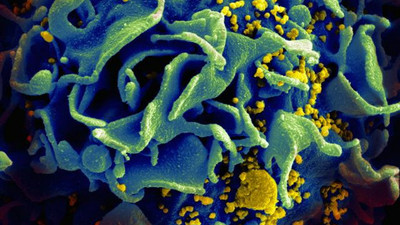Far-ultraviolet light demonstrates that indoor aerial microbial levels can be reduced by as much as 98%

by
Researchers have demonstrated that far-ultraviolet light can reduce microbial levels in indoor air by more than 98% in less than five minutes. Scientists involved in the research say that using technology in places where people gather can reduce the next potential pandemic.
Far-UVC (222 nm) efficiently inactivates an airborne pathogen in a room-sized chamber | Scientific Reports
https://doi.org/10.1038/s41598-022-08462-z

New Type of Ultraviolet Light Makes Indoor Air as Safe as Outdoors | Columbia University Irving Medical Center
New Kind of Ultraviolet Light Safely Kills Airborne Pathogens Indoors, Scientists Say
https://www.sciencealert.com/new-kind-of-ultraviolet-light-safely-kills-airborne-pathogens-indoors-scientists-say
Dr. David Brenner and colleagues at Columbia University discovered a wavelength that 'has the ability to kill harmful bacteria but is harmless to the human body .' Since then, in the pandemic of the new coronavirus, we have been conducting research on destroying pathogens in the air with far-ultraviolet light.
Researchers are confident that they will 'change the situation significantly' while research is underway to destroy the new coronavirus in the air with UV lamps --GIGAZINE

This research is a joint research with researchers at the University of St Andrews, the University of Leeds, and the University of Dundee. I turned on a commercially available far-ultraviolet light when the concentration of microorganisms in the room was stable.
Then, in just 5 minutes, 98% of the microorganisms in the air were inactivated. Even if the spray of aerosol mist was continued, the low microbial concentration was maintained.
Dr. Kenneth Wood, lead author of the study and professor of physics and astronomy at the University of St Andrews, said, 'From an infection control perspective, far-ultraviolet lights are as safe indoors as being on a golf course at the University of St Andrews on a refreshing day. Can be. '
Dr. Brenner said, 'The particularly attractive point of the far-ultraviolet C-wave technology used this time is the mutant strain of the new coronavirus that may appear in the future while maintaining the efficacy against the virus so far, and the new infectivity that has not been seen yet. Viruses can be inactivated as well. '
Related Posts:
in Science, Posted by logc_nt






